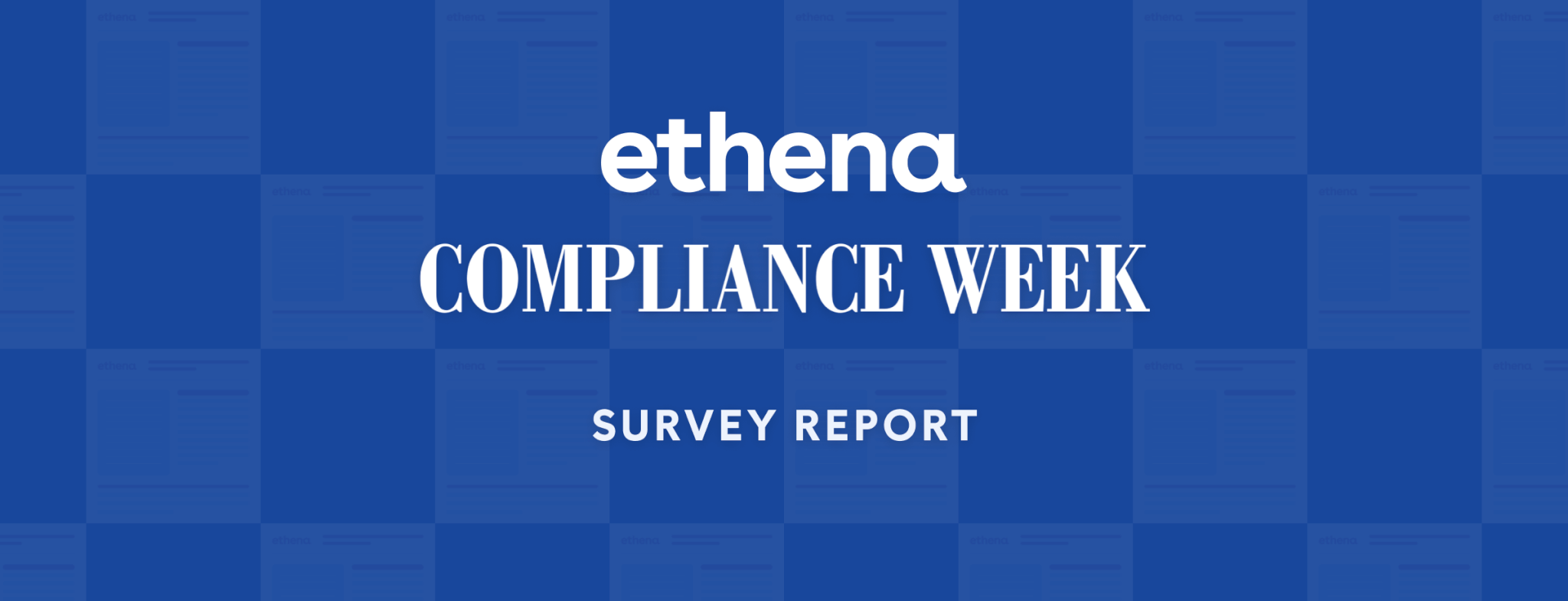When headlines break about corporate misconduct, the questions are always the same: How did this happen? Where was compliance? Why didn’t someone speak up sooner?
The reality is, most ethical failures don’t stem from a lack of policies. They happen when those policies exist only on paper — when values aren’t reinforced, when employees don’t trust internal processes, or when compliance is treated as a procedural afterthought instead of a strategic priority.
For ethics and compliance professionals, the goal isn’t just to prevent fines or investigations — but rather build a program that proactively identifies risk, supports ethical decision-making, and earns the trust of employees, stakeholders, and regulators alike.
So what separates a check-the-box program from one that actually works?
Let's break down the essential components of an effective ethics and compliance (E&C) program — not just to meet regulatory expectations, but to strengthen culture and reduce risk in meaningful, lasting ways.
1. Clear, accessible policies and procedures
At the foundation of any compliance program is a set of documented policies — your code of conduct, anti-bribery protocols, harassment and discrimination policies, data privacy guidelines, and more. But truly effective programs ensure these aren’t just static documents employees skim once during onboarding.
What this looks like in practice:
- Plain language and real-world relevance. Policies should be clear, concise, and grounded in the scenarios employees actually face; not legal jargon or vague corporate speak.
- Accessibility. Employees should be able to easily locate and understand the policies that apply to them, whether they’re in the office, working remotely, or out in the field.
- Regular updates. A policy that works well today could be outdated next year. Effective programs have a clear cadence for reviewing and updating documents based on regulatory changes, risk assessments, or business evolution.
- Employee involvement. Consider engaging employees in policy feedback or rollout to improve clarity and adoption. When policies feel co-owned, they’re more likely to be followed.
Well-crafted policies are the foundation, but the real power comes when they’re embedded into the daily rhythm of work.
2. Executive-level support and resources
An ethics and compliance program cannot thrive without support from the top. That doesn’t just mean approving a budget or mentioning compliance in an annual report — it means modeling the behavior you want to see and integrating compliance into business decision-making at every level.
Signs of strong leadership support:
- Executives speak consistently about values, ethics, and compliance — not just profitability.
- Senior leaders hold themselves accountable to the same standards as the rest of the organization.
- E&C leaders have direct access to the board or audit committee.
When employees see that leadership prioritizes ethics even when it’s inconvenient, it reinforces the message that doing the right thing is expected, rather than optional.
3. Training that's risk-based, relevant, and engaging
Compliance training often gets a bad rap... and to be honest, a lot of it has earned that reputation. Ineffective programs rely on generic, annual courses that feel disconnected from day-to-day work. But modern, high-impact programs value training as an opportunity to shape culture, not just check a box.
Effective compliance training is:
- Tailored to risk. A frontline retail worker, a procurement officer, and a software engineer don’t face the same compliance risks — and their training shouldn’t look the same either.
- Role- and region-specific. Consider localization needs (for example, sexual harassment training requirements vary by state) and tailor content to reflect regional legal and cultural contexts.
- Continuous and embedded. Training shouldn’t be a one-and-done event. Microlearning, reminders, scenario-based refreshers, and onboarding integrations help keep concepts top of mind year-round.
- Action-oriented. The best training gives employees clear guidance on how to respond in tricky situations and where to go with questions or concerns.
Training is where your policies come to life — it’s how employees learn what compliance looks like in practice, and how their choices contribute to a healthier organization.
4. Reporting channels employees trust
Simply having an ethics hotline or other reporting mechanism is one thing. Creating a speak-up culture where people use it is another.
Many compliance failures go unreported not because no one noticed, but because employees didn’t feel safe saying something — or they didn’t believe their concern would be taken seriously. An effective program builds trust in the reporting process and removes barriers to speaking up.
Key elements of a trustworthy reporting system:
- Multiple, accessible reporting channels. Hotlines, web portals, mobile apps, in-person conversations — make sure there’s a method that works for every employee.
- Anonymity options. Some concerns are easier to raise anonymously, and employees should have that choice without fear of retaliation.
- Clear anti-retaliation messaging — and enforcement. It's not enough to say retaliation won’t be tolerated. Your program should actively monitor for signs of retaliation and respond swiftly if it occurs.
- Follow-through. Reporters should receive acknowledgment and (when appropriate) updates. Even if an investigation doesn’t result in action, closing the loop builds trust.
If employees don’t feel confident that raising concerns will lead to fair and constructive outcomes, they won’t speak up — and your risk grows exponentially.
5. Strong investigations and enforcement
Once a concern is raised, what happens next sends a strong message about the organization's commitment to accountability. Inconsistent or opaque investigations — or discipline that favors seniority over fairness — can erode the entire foundation of your program.
Strong investigation protocols include:
- Standardized processes. Every case should follow a defined workflow, with clear steps for intake, triage, investigation, resolution, and documentation.
- Impartial investigators. Those involved in a complaint should never be tasked with resolving it. Consider using trained internal investigators or third parties when neutrality is in question.
- Proportional consequences. Discipline should be consistent, regardless of role, tenure, or influence. Holding senior leaders accountable is especially important for credibility.
- Documentation and audit trails. Investigations should be documented clearly — not just for internal tracking, but to demonstrate diligence to regulators if needed.
It’s not enough to encourage employees to speak up. You need to show them that their concerns will be handled with care, competence, and fairness.
6. Ongoing monitoring and improvement
Ethics and compliance is a living program that should evolve with your business. Laws change. Business strategies shift. Risk landscapes evolve. An effective program adapts in response — and that requires consistent evaluation.
Monitoring and improvement strategies include:
- Regular risk assessments. Identify and prioritize new or evolving risks based on changes in your business, industry trends, and regulatory developments.
- Internal audits. Periodic reviews of policy adherence, training completion, and investigation outcomes can identify gaps before they become liabilities.
- Data tracking. Monitor key compliance KPIs — like hotline volume, training completion rates, or investigation closure times — to spot trends and allocate resources more effectively.
- Employee feedback. Use surveys, focus groups, or informal conversations to understand how employees perceive the program and where improvements are needed.
A program that doesn’t evolve can quickly become irrelevant. Continuous improvement helps you stay aligned with both compliance best practices and employee expectations.
7. A culture that reinforces ethics every day
Culture is where all of this work either takes root or falls flat. Even the best-designed program can’t succeed in a culture that rewards corner-cutting, ignores power imbalances, or treats compliance as an obstacle to business goals.
How to build a strong ethical culture:
- Celebrate ethical behavior. Don’t just reward outcomes; recognize how people achieve results. Highlight ethical decision-making in performance reviews, promotions, and company-wide recognition.
- Incorporate values into business decisions. Ask “What’s the right thing to do?” as often as “What’s the most efficient option?”
- Support open dialogue. Managers should feel comfortable discussing gray areas with their teams — and employees should know they can ask questions without judgment.
- Walk the talk. Nothing undermines a program faster than leaders who say one thing and do another.
Culture isn’t built in a day; but when ethics and compliance are consistently modeled, reinforced, and celebrated, they become part of how work gets done.
The bottom line
It takes time, investment, and buy-in across the organization. But when these foundational elements are in place — clear policies, strong leadership, relevant training, trusted reporting systems, fair investigations, continuous improvement, and a healthy culture — your program becomes more than a safeguard. It becomes a strategic asset.











